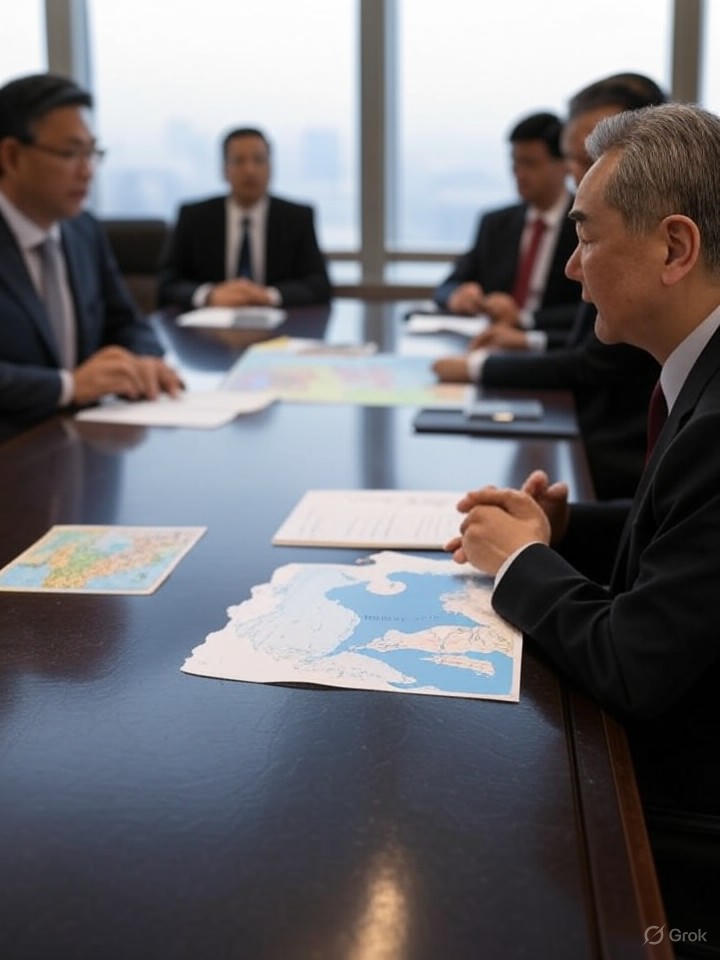In the swirling currents of global geopolitics, the recent thaw in India-China relations is emerging as a pivotal shift, driven largely by U.S. President Donald Trump’s aggressive tariff policies. As of August 2025, New Delhi and Beijing have announced measures to resume trade links, ease export curbs, and even restart direct flights suspended for five years, signaling a potential realignment that could reshape economic dynamics across Asia. This development comes amid heightened U.S. tariffs on Indian goods—up to 50% in some cases—imposed in response to India’s trade imbalances and continued purchases of Russian oil, pushing Prime Minister Narendra Modi’s government to seek alternatives.
Analysts note that India’s staggering $99.2 billion trade deficit with China, nearly double its deficit with the U.S., has long been a point of contention, yet the current U.S. pressure is accelerating a pragmatic pivot. According to a recent report from the Stimson Center, these tariffs risk upending bilateral U.S.-India ties, compelling India to diversify partnerships and reaffirm its strategic autonomy by engaging more deeply with Beijing and even Moscow.
Thawing Borders and Trade Flows
The catalyst for this bonhomie traces back to diplomatic overtures, including a high-level visit by Chinese diplomat Wang Yi to Delhi in August 2025, where both sides agreed to work on resolving lingering border disputes in the Himalayas. This follows a 2024 disengagement along the Line of Actual Control, but trust deficits persist over issues like water security and China’s ties with Pakistan. Nonetheless, the resumption of trade has tangible benefits: India is easing restrictions on Chinese foreign direct investment in non-sensitive sectors, potentially bolstering its manufacturing base amid U.S. trade frictions.
Posts on X from industry observers highlight the sentiment, with users noting that India’s exports to the U.S. could plummet by 30% to about $60.6 billion in 2025-26 due to these tariffs, as projected by the Global Trade Research Initiative. This economic strain is prompting New Delhi to leverage China’s vast market, where bilateral trade already exceeds $100 billion annually, despite imbalances.
U.S. Influence in Asia Under Threat
The implications for Washington are profound, as this India-China rapprochement threatens to undermine the U.S.-led Quadrilateral Security Dialogue (Quad), comprising the U.S., India, Japan, and Australia, aimed at countering Chinese influence in the Indo-Pacific. As detailed in a feature by Al Jazeera, Trump’s tariffs and isolationist stance are inadvertently pulling India closer to China, potentially weakening the Quad’s cohesion and U.S. strategic footprint in Asia.
Former U.S. officials like Nikki Haley have warned in pieces for The Economic Times that without India as a bulwark against China’s rise, the U.S. loses critical leverage in manufacturing, military alliances, and supply chain diversification. India’s role in reshoring tech and pharma from China is vital, yet tariffs risk alienating this key partner.
Economic Recalibrations and Long-Term Risks
For industry insiders, the real intrigue lies in trade specifics: China remains India’s second-largest trading partner, with initiatives like joint manufacturing ventures echoing Modi’s 2015 visit goals of reaching $100 billion in bilateral trade. Recent moves, such as China recalling engineers from Foxconn’s Indian plants only to see India partner with Taiwan and the U.S. for replacements, underscore the competitive undercurrents, per updates on Wikipedia‘s evolving entry on China-India relations.
However, this warming could exacerbate India’s dependence on Chinese imports, from electronics to critical minerals, while U.S. tariffs force a reevaluation of supply chains. A Chatham House analysis suggests that while short-term strains persist, U.S.-India relations may endure due to shared interests in defense and technology, but the current trajectory favors Beijing’s influence.
Geopolitical Ripple Effects
Beijing’s ambassador has publicly decried the U.S. as a “bully” for its tariffs, as reported by the BBC, framing China as a more reliable partner for India. This narrative is gaining traction, with X posts emphasizing how U.S. policies might accelerate India’s multi-alignment strategy, balancing ties with Russia and China against Western alliances.
Yet, risks abound: unresolved border tensions could flare up, and India’s strategic gains from U.S. partnerships in energy and infrastructure, as noted in AInvest, might be jeopardized if the bonhomie falters. For now, this shift is a calculated gamble, potentially redrawing Asia’s power balances and challenging U.S. dominance in ways that extend far beyond trade ledgers.
Future Trajectories and Industry Imperatives
Looking ahead, executives in tech and manufacturing must monitor how this realignment affects global supply chains. India’s push for self-reliance under “Make in India” could intersect with Chinese investments, creating hybrid models that bypass U.S. restrictions. A Guardian article hails the warming ties as a Trump-induced shake-up, suggesting that if sustained, it might foster a new Asian economic bloc.
Ultimately, while the U.S. remains India’s long-term strategic partner, the immediate fallout from tariffs is fostering an India-China axis that could dilute Washington’s influence, urging policymakers and businesses to adapt swiftly to these evolving dynamics.




 WebProNews is an iEntry Publication
WebProNews is an iEntry Publication